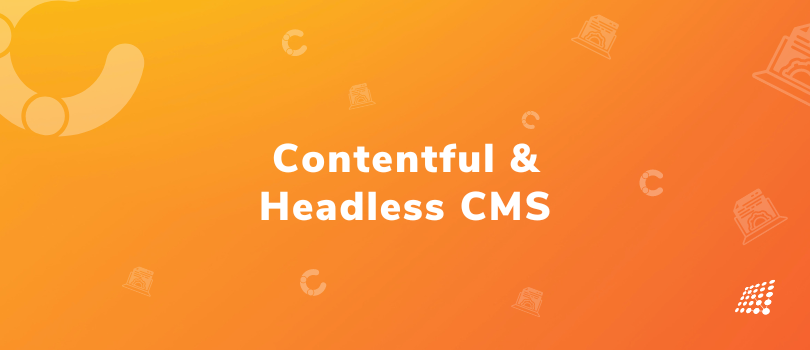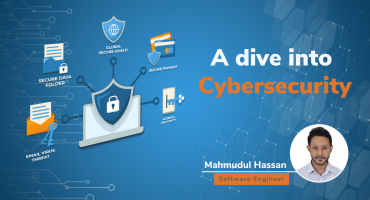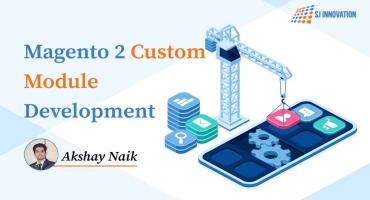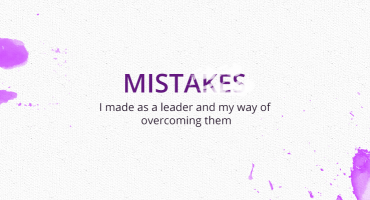The Relevance of Contentful and Headless CMS approach in modern architecture!

When it comes to modern architecture, user experience triumphs over everything. If your website is seamless and intuitive, it automatically converts visitors into customers — but you must first sort out how to manage your content. There are many ways you can manage your content, but make sure you think about a few elements before making a decision. Ask yourself:
- How much customization can you get?
- What kind of performance does the content management system provide?
- How much security do you need?
- Will it work with the rest of your tech stack?
With Headless CMS approaches such as Contentful, it becomes easier to build an eye-catching platform that blends with the needs and expectations of your audience.
In this article, we will look at why you should use a Contentful and Headless CMS approach in modern architecture, and how using the Contentful and headless CMS approach can ensure your business delivers both improved software and faster content. The result? Top-notch customer experience!
What is Contentful?

Put simply, Contentful is the platform that makes it easy to update the content of your mobile app, website, or any other platform that displays content.
- The platform’s code infrastructure makes it easy to deliver content to users 24/7.
- It offers an aesthetically pleasing and simple user interface.
- Contentful comes with flexible content models so you create the content model based on your tastes.
- The best part? Its API allows you to deliver content with the click of a button.
What’s all the fuss about Headless CMS?

Think of Headless CMS in this way: A back-end content management system where raw content is safeguarded in storage that can be accessed through an API call. This CMS is also known as “API-first” CMS while the term ‘headless’ is all about the radical approach of separating the back end from the front end (head).
How does Headless CMS function?

Eg: You can break down Headless CMS into the back end and front end.
What to know about the back end
One of the most fundamental elements that earn Headless CMS brownie points is how content is managed. The content is separated from the presentation layer so you get to structure the content logically, just like you can with the Contentful data model.
What to know about the front-end
Developers can easily create multichannel solutions, where the same content can be reused in many platforms, applications, and devices. This is possible because the content does not have to follow the format limitations of traditional CMSes.
Another upside of going with Headless CMS is that to obtain a goal, developers can use the most convenient framework or language to present content — It all depends on the use case.
What is Contentful CMS all about?
Contentful brings a unique approach to content management. It is an API-centric solution designed from scratch to manage content with the help of headless architecture. It is a content platform used to build digital experiences at scale. It's much more powerful and customizable than other content management systems and is an API-first composable content platform to create, manage, and publish content on any digital channel.
Contrary to what many people believe, the Headless CMS method used by Contentful is far from the decoupled headless CMS approach used by a few platforms such as WordPress. Why?
- Decoupled CMS APIs are restricted to the type of content they are going to serve.
- When it comes to WordPress, the content has been separated from the website rendering engine although this content needs to follow a specific format and structure that allows it to be compatible with WordPress plugins and themes.
Headless CMSes such as Contentful rely on the ‘API-first’ principle, so they are linked to any specific UI framework that can otherwise offer a great deal of flexibility.
So, this brings us to a looming question.
Why opt for a Headless CMS instead of a Decoupled CMS or Traditional CMS?
Yes, the most obvious upside of Headless CMSes is a clear-cut separation between the back-end and front-end, there are many more reasons to go Headless!
Omnichannel friendly

Wouldn’t it make processes easier if you obtained an omnichannel content strategy? Traditional and decoupled CMSes cannot do much other than serve one type of content. After all, they rely on a monolithic approach. These platforms weren’t designed to be content repositories but to look after dynamic web pages.
Headless CMSes help push forward an omnichannel content strategy. Headless CMSes are structured data silos. A developer can create an API that utilizes such data in various ways.
Example: The content stored in the back-end of a Headless CMS can be used for a blog and also for a web application running on a mobile device, provisioning an e-commerce site, or a chatbot.
The best part?
- Headless CMS is flexible enough to centralize content no matter what you use it for.
- Structured content stored in Contentful Headless CMS can be used to implement an omnichannel experience.
Competent content editing

For traditional CMS platforms like Drupal, Episerver, or WordPress, content editing is managed from within the CMS. This offers a prompt solution for small to medium-sized blogs and websites although, it is not the wisest solution for large sites that process hundreds of pages of new content every month.
- Along with the overhead that the flashy WYSIWYG editor has on bucket resources, using this approach looks at every page and post as a ‘bucket’ where all aspects meet. This includes the content (text), HTML formatting, videos, shortcodes, and images.
- Traditional CMSes also involve layers of complexity for managing a multi-language site, especially if you need to correlate all these aspects.
In contrast, with Contentful you can:
- Structure content efficiently, separating and classifying content into interrelated fields that can be restructured and reused.
- Also, since the primary aim of the backend is to edit and store content predictably, you can edit structured content in a variety of ways which is true with the new Contentful Slide-In Editor.
- The result? Content Headless CMS offers a prompter editing experience.
Unlimited scalability

Traditional CMSes such as Drupal and Episerver come with limited scalability owing to their monolithic architecture. The performance of these platforms is also limited, even with the help of a load balancer.
Alternatively, Contentful Headless CMS is designed by considering existing trends. Contentful is a cloud-native platform and so its scalability headroom is unlimited. Additionally, this kind of scalability is not bound to the back end and also applies to the front end.
So yes, the possibilities are endless for both the Headless CMS back-end and the presentation layer consuming API calls. Based on the use case, developers can utilize services such as Netlify to use high-performance cloud-based services to host HA applications or serve static web pages.
DevOps and agile friendly

While monolithic CMS platforms are not ready for agile development practices and DevOps principles, Contentful, is designed keeping the principles used by modern development teams in mind — this takes CMSes to the next level.
- Contentful offers versatile tools such as Contentful’s space environments to easily create and maintain many versions of the space-specific data and make changes to them in isolation.
- Developers can utilize CI/CD tools to build a pipeline that makes delivering content prompter.
- It’s a bonus for teams trained in Agile and DevOps principles as they can easily use the tools they are familiar with.
All of this makes it effective to use the inherent advantages of DevOps like higher quality content, enhanced security, better collaboration between departments/development teams, and more!
To know more about how to use Contentful and the Headless CMS approach or how the SJ Innovation and Contentful partnership can help your business deliver better software and faster content, get in touch with us!

A Dive into Cybersecurity

Magento 2 Custom Module Development


